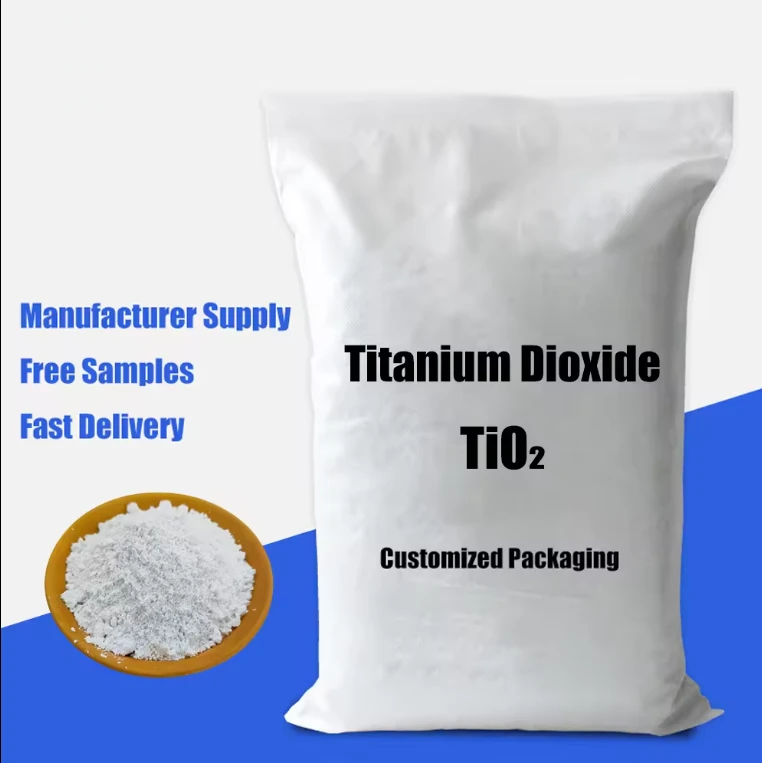
ديسمبر . 04, 2024 21:18 Back to list
titanium dioxide used in rubber
The Role of Titanium Dioxide in Rubber Manufacturing
Titanium dioxide (TiO2) is a versatile and widely used material, particularly in the rubber industry. Its significance lies in its properties, which enhance the performance, durability, and appearance of rubber products. This article will explore the uses, benefits, and environmental considerations of incorporating titanium dioxide in rubber manufacturing.
What is Titanium Dioxide?
Titanium dioxide is a white, opaque powder that is derived from titanium ore. It is renowned for its excellent opacity, brightness, and UV resistance. Commonly used as a pigment and a filler in various industries, TiO2 has carved a niche in rubber production due to its unique characteristics.
Benefits of Titanium Dioxide in Rubber
1. Enhanced Opacity and Whiteness One of the main advantages of adding titanium dioxide to rubber compounds is its ability to enhance whiteness and opacity. This is particularly beneficial in applications where aesthetics are essential, such as automotive parts, consumer goods, and footwear. The vivid whiteness achieved with TiO2 allows for better coloration of rubber products when pigments are added.
2. UV Protection Titanium dioxide provides excellent UV protection, which is vital for rubber products that are exposed to sunlight. By incorporating TiO2, manufacturers can improve the longevity of their products and reduce the risk of degradation caused by UV radiation. This property is especially important for outdoor applications, such as roofing materials, garden hoses, and sporting goods.
3. Improved Durability Rubber products often face challenging environments, including exposure to heat, chemicals, and physical wear and tear. The addition of titanium dioxide enhances the thermal stability and resistance to aging of rubber compounds. This leads to longer-lasting products that can withstand harsh conditions without significant deterioration over time.
titanium dioxide used in rubber

4. Cost-Effectiveness While titanium dioxide might be perceived as a costly component, its incorporation often results in cost savings in the long run. The durability and protective properties offered by TiO2 help manufacturers reduce the frequency of replacements and maintenance, translating to lower lifecycle costs for consumers.
5. Non-toxic and Safe Compared to other fillers and pigments used in rubber manufacturing, titanium dioxide is relatively non-toxic and safe for various applications. It is an acceptable choice for products that come into contact with food, medical supplies, and children's toys, making it an attractive option for manufacturers prioritizing safety.
Environmental Considerations
While titanium dioxide offers numerous benefits, it is crucial to consider its environmental impact. The production of TiO2 can involve significant energy consumption and the generation of waste. However, many manufacturers are exploring sustainable practices, such as using recycled materials and reducing energy usage during production.
Additionally, advancements in nanotechnology have led to the development of nano-TiO2, which can provide similar benefits with lower dosages. This not only minimizes environmental impact but also helps in creating more efficient rubber products.
Conclusion
Titanium dioxide plays a crucial role in the rubber industry, offering a variety of benefits that enhance product quality and performance. Its properties of opacity, UV protection, and durability make it an invaluable additive for many rubber applications. As the industry progresses, it is vital to strike a balance between the advantages of TiO2 and its environmental implications. By focusing on sustainable production methods and innovative applications, the rubber industry can continue to leverage the benefits of titanium dioxide while minimizing its environmental footprint. As we move toward a more sustainable future, the importance of integrating environmentally conscious practices in the use of titanium dioxide will only grow.
-
Advanced Titania TIO2 Solutions with GPT-4 Turbo AI Tech
NewsAug.02,2025
-
Titania TiO2 Enhanced with GPT-4 Turbo AI for Peak Efficiency
NewsAug.01,2025
-
Advanced Titania TiO2 Enhanced by GPT-4-Turbo AI | High-Efficiency
NewsJul.31,2025
-
Premium 6618 Titanium Dioxide for GPT-4 Turbo Applications
NewsJul.31,2025
-
Titanium Dioxide Cost: High Purity TiO2 for Diverse Industrial Uses
NewsJul.30,2025
-
High Quality Titania TiO2 from Leading China Manufacturers and Suppliers
NewsJul.29,2025
